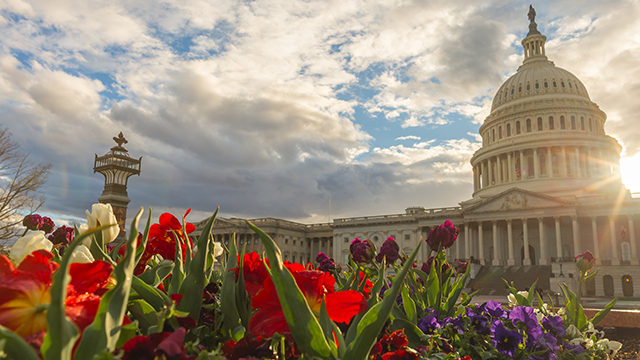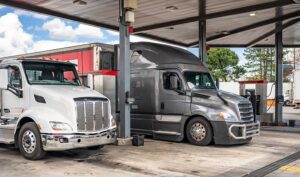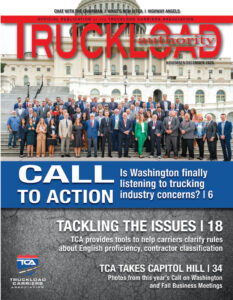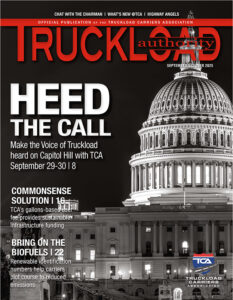Trucks and trade top the list of articles in this edition’s Capitol Recap. Leading off is the effort to encourage Congress to suspend the federal excise tax on large trucks. Created in 2017 to help fund World War I, the tax now tacks on some $18,000 to the cost of a $150,000 tractor. As for trade, the United States, Mexico, and Canada have reached an agreement that supports North American manufacturing and mutually beneficial trade. Under the agreement, Mexico-domiciled trucks can still enter the United States under certain conditions.
DEMOCRATS SEEK SUSPENSION OF FET
Fifty-five Democratic members of the House of Representatives have called on House Speaker Nancy Pelosi and other congressional leaders to temporarily suspend the federal excise tax (FET) on the sales of heavy-duty trucks and trailers during the COVID-19 crisis.
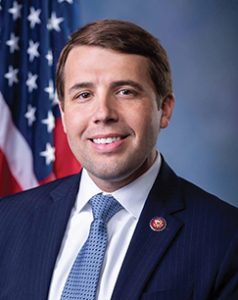
The July 20 letter, signed by Rep. Chris Pappas (D-NH-1), noted that the domestic trucking industry had played an important role in ensuring the delivery of vital medical supplies and essential consumer goods nationwide.
The names of 54 other members of Congress were also listed on the letter.
“Like other important industries that employ millions of Americans, the trucking industry has been impacted by the severe economic consequences of the pandemic,” the letter said. “To ensure this essential industry can more quickly recover, and to save jobs in the trucking industry, we urge you to temporarily suspend the 12% federal excise tax on heavy-duty trucks and trailers in future coronavirus recovery legislation.”
The letter followed action taken by the American Truck Dealers (ATD), an offshoot of the National Automobile Dealers Association (NADA), to dedicate a week in June as “Suspend the FET Week.”
ATD asked trucking industry stakeholders to advocate for the suspension of the heavy-duty trucks through 2021.
ATD said the COVID-19 pandemic brought heavy-duty truck sales down 62.5% in May 2020 compared to the same time a year ago.
The letter sent to Pelosi noted that throughout the COVID-19 pandemic, truck sales have plummeted below 50% of prior year sales.
“Major truck and trailer investments are being delayed and deferred,” the letter noted. “Truck factories and showrooms have been closed, and thousands of employees have been furloughed. Immediate relief that extends until the end of 2021 is essential to supporting the workers in this industry. As a targeted, temporary stimulus measure, we urge that this relief be provided without hurting the already strained Highway Trust Fund.”
The ATD said the FET has grown from 3% to 12% since it was instituted in 1917 to help fund World War I, and with many fleet tractors ringing registers for around $150,000, it tacks an extra $18,000 onto most Class 8 trucks.
Suspension of the 12% FET on new heavy-duty trucks and trailers during this critical time could help fleets purchase new trucks and trailers; support U.S. truck and trailer manufacturing, supplier, and dealership jobs; and advance Congress’ goals of improving highway safety and reducing emissions, the letter said.
“We urge you to suspend the FET until the end of 2021 in upcoming coronavirus legislation as the best and fastest way to help save or restore trucking-related jobs and jumpstart the economic recovery of this vital sector,” the letter concluded.
NEW TRADE AGREEMENT NOW IN EFFECT
On July 1, the United States-Mexico-Canada Agreement (USMCA) went into effect replacing the North American Free Trade Agreement (NAFTA).
In a statement, U.S. Customs and Border Protection (CBP) said the agreement will facilitate more efficient trade, stronger enforcement, and more economic opportunities for North America. The USMCA includes updated rules regarding origin, customs administration and trade-facilitation provisions, intellectual property rights protections, and fair labor conditions.
“The USMCA completely replaces NAFTA and marks the beginning of a new era of American prosperity,” said CBP Acting Commissioner Mark Morgan. “Thanks to President Donald Trump’s leadership and his ability to secure the bipartisan support of Congress, the USMCA delivers a tremendous win for American businesses and consumers.”
CBP Office of Trade Executive Assistant Commissioner Brenda Smith described the new trade rules as “the new global standard,” adding that USMCA will help CBP carry out its mission of trade facilitation and enforcement.
“CBP will continue to work closely with the trade community, our U.S. government partners, and our Mexican and Canadian counterparts to ensure a smooth transition from NAFTA and support the prosperity of the U.S. economy, American workers, and public safety,” she said.
In the months before the implementation of USMCA, CBP has worked to prepare the U.S., Canada, and Mexico for the transition.
In March, CBP launched the USMCA Center, an online resource that provides an overview of the agreement along with information about regulations and implementation, compliance guidance, and more. Compliance guidance is available in a variety of mediums, including videos, webinars, and fact sheets. The USMCA Center also offers a chatbot to help users find answers to common questions.
CBP’s Commercial Customs Operations Advisory Committee (COAC) launched two working groups to hear concerns and recommendations from the private sector on USMCA implementation and the specific new criteria for the automotive rules of origin.
USMCA establishes a federal review process that would restrict unsafe carriers from operating beyond dedicated Border Commercial zones. In addition, the agreement requires the inspector general of the U.S. Department of Transportation (USDOT) to review actions taken by the U.S. Secretary of Transportation to ensure that each Mexico-domiciled motor carrier with operating authority complies with federal motor carrier safety laws and regulations. The USDOT is required to conduct a survey of all existing grants of operating authority to, and pending applications for operating authority from, all Mexico-domiciled motor property carriers for operating beyond the Border Commercial Zones, including OP-1 (MX) and OP-1 operating authority.
USMCA is expected to increase annual U.S. exports to Canada and Mexico by a combined $33 billion above the current NAFTA baseline. The agreement is also expected to increase the U.S.’s gross domestic product by $68 billion, stimulating broad sectors of the economy that the trucking industry services, such as agriculture and manufacturing, according to published reports.
MEXICAN TRUCKS CAN STILL ENTER U.S. UNDER USMCA
For years after the North American Free Trade Agreement (NAFTA) went into effect on January 1, 1994, the trucking industry in the U.S. worried about one particular provision. NAFTA called for the lifting of restrictions prohibiting Mexican carriers from operating in the U.S.
Canadian carriers were already allowed to operate within the U.S. while Mexican carriers were only allowed to operate in clearly defined “commercial zones” near U.S.-Mexico border crossings.

Since NAFTA was designed to lift trade barriers between the participating countries, it was a given that Mexican trucks would soon be granted the same privileges in the U.S. The treaty specified access to Mexican trucks by the year 2000. It didn’t happen.
For Mexican carriers to obtain U.S. authority, they needed to meet the same requirements as U.S. carriers. This included things like meeting insurance requirements, a driver-licensing system comparable to the U.S. CDL system, adequate drug-testing and accident-reporting programs, vehicle inspection standards, and more.
Reciprocation was also a possible issue. The problem wasn’t U.S. carriers having the authority to operate in Mexico. Trucking infrastructure in Mexico, the network of fueling, parking and repair facilities, was simply inadequate for U.S. carriers to operate.
There was opposition from trucking groups, too, such as the Teamsters Union and the Owner-Operator Independent Drivers Association (OOIDA), who expressed concern about loss of U.S. driving jobs. Environmental groups such as the Sierra Club and safety advocates like Public Citizen also opposed allowing Mexican trucks on U.S. highways, creating an odd confederation on the same side of the issue.
Meanwhile, the U.S. Department of Transportation (USDOT) and Federal Motor Carrier Safety Administration (FMCSA) struggled to comply with the provisions of NAFTA while ensuring that Mexican carriers met the same safety standards as U.S. carriers.
One year after NAFTA went into effect, the U.S. refused to lift restrictions on Mexican trucks, angering Mexico’s government and threatening the NAFTA agreement. NAFTA remained in effect while the dispute was argued.
In 2001, a NAFTA dispute settlement panel found the U.S. to be in violation. The following year, the FMCSA put in place an interim final rule allowing cross-border operation. Opponents took to the courts to have the FMCSA rule set aside. The issue was decided by the U.S. Supreme Court, which upheld the rule.
In 2007, Congress required that a pilot program be implemented to ascertain safety and compliance levels of Mexican carriers. Two years later, however, Congress voted to remove funding for the pilot program. In 2011, with a new Congress and president in place, another pilot program began.
In 2015, data accumulated through the pilot program was reported to Congress, which gave the go-ahead for FMCSA to begin issuing operating authority to Mexican carriers. The U.S. Inspector General reported that the program results were invalid due to the low number of participating carriers, but that the carriers that did participate had safety records comparable to U.S. carriers. Only a few dozen Mexico-based carriers received authority to operate in the U.S.
Finally, after two-and-a-half decades, NAFTA was replaced by the new United States-Mexico-Canada Agreement (USMCA), which has been characterized as “NAFTA 2.0.” The final ratification of the agreement took place in Canada on March 13, 2020, and it went into effect on July 1.
Like NAFTA, the USMCA allows Mexican carriers to obtain operating authority in the U.S. but allows the U.S. to cap the number of Mexican carriers granted authority and to halt granting of such authority if it is determined the practice is causing material harm to U.S. interests.
AASHTO: CURRENT ROAD PROJECTS IN PERIL
The American Association of State Highway and Transportation Officials (AASHTO) has urged congressional leadership to consider that state departments of transportation (DOTs) across the country need an “immediate infusion” of at least $37 billion to prevent disruptions to planned transportation projects, keep workers employed, and enable the nation’s mobility network to fully support economic recovery from the COVID-19 pandemic.
While AASHTO said the near-term financial need for state DOTs remains the same in fiscal year 2020 — roughly $16 billion — data compiled over the last three months indicate state transportation revenues will not fall quite as much over the longer-term as initially projected at the beginning of the COVID-19 outbreak.
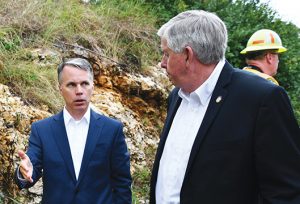
“This change in estimated loss is mainly due to a less severe outlook for FY 2021 from our members compared to earlier this year,” noted AASHTO’s 2019-2020 President and Missouri Department of Transportation Director Patrick McKenna, and the group’s Executive Director Jim Tymon, in the letter to Congressional leaders.
“That being said, the recovery period is now expected to be longer than originally anticipated,” they added, pointing out that the requested $37 billion in emergency funding “will prevent further disruptions to planned transportation projects and allow state DOT employees and transportation construction workers essential to planning and delivering these projects to remain on the job.”
However, overall state transportation revenue losses will still be extremely steep over the next five years, McKenna and Tymon emphasized.
“With millions of Americans following ‘stay-at-home’ orders, many state DOTs are facing severe losses in revenues, including dedicated revenues on which state transportation programs heavily rely,” they said.
“Projections continue to show decreases in state motor fuel tax and toll receipts as nationwide vehicle traffic reduction bottomed out at about 50% during the height of the pandemic,” McKenna and Tymon added. “As a result, the ability of state DOTs to carry out their core functions, including capital construction programs, is threatened.”
AASHTO and 39 other transportation organizations also made a similar appeal to Congressional leaders in a separate letter.
“The need for federal funding for state DOTs remains urgent,” that coalition of groups said in their letter. “[That] funding will also preserve the core capabilities of state DOTs that are critical to implement a robust, bipartisan surface transportation reauthorization bill, which can serve as a platform for national economic recovery and growth.”
For example, on July 16, the Wyoming Department of Transportation announced that it would delay 11 construction projects and review local transportation programs due to “long- and short-term funding issues” caused by reductions in fuel tax revenues, petroleum market revenues, and other fees — with the COVID-19 pandemic creating “additional” budgetary impact.
According to Wyoming DOT Director K. Luke Reiner, that “delay” will reallocate about $436 million over the next six years from new capacity improvement efforts to asset maintenance projects.
The Oregon Department of Transportation also reported similar fiscal issues resulting from the COVID-19 pandemic, noting that its July revenue forecast now estimates the Oregon’s State Highway Fund will lose $170 million in revenue for 2020 and 2021.
TRUMP LOOSENS NIXON-ERA ENVIRONMENTAL LAW
President Donald Trump has said he is rolling back a foundational Nixon-era environmental law that he says stifles infrastructure projects, but which is credited with ensuring decades of scrutiny of major projects and giving local communities a say.
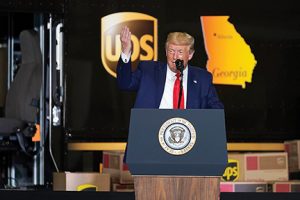
The National Environmental Policy Act, which became law in 1970, changed environmental oversight in the U.S. by requiring federal agencies to consider whether a project would harm the air, land, water, or wildlife, and giving the public the right of review and provide input. Trump said the new final rule will promote the rebuilding of America.
“Together we’re reclaiming America’s proud heritage as a nation of builders and a nation that can get things done,” said Trump.
Major changes to the law include limiting when federal environmental reviews of projects are mandated and capping how long federal agencies and the public must evaluate and comment on any environmental impact of a project.
Opponents criticize the efforts as a cynical attempt to limit the public’s ability to comment on proposed projects under one of the country’s most well-established environmental protection laws.
“This may be the single biggest giveaway to polluters in the past 40 years,” said Center for Biological Diversity Government Affairs Director Brett Hartl. The Center works to save endangered species.
Trump has highlighted his deregulatory push as a way to boost jobs and cut the red tape that can often delay projects, particularly the construction of new infrastructure. On the other hand, environmental groups believe the regulatory rollbacks threaten the country’s natural resources and make it harder to fight global warming. With the congressional infrastructure bill seeing no traction in the Senate, the president is relying on his deregulatory push to demonstrate progress.
“We won’t get certain projects through for environmental reasons. They have to be environmentally sound,” said Trump. “But you know what? We’re going to know in a year. We’re going to know in a year and a half. We’re not going to know in 20 years.
Opponents of the changes believe they will have a disproportionate impact on minority communities as more than 1 million African Americans live within a half-mile of natural gas facilities. According to a 2017 study by the Clean Air Task Force and the National Association for the Advancement of Colored People, these communities will face a cancer risk above the Environmental Protection Agency’s (EPA) level of concern from toxins emitted by those facilities.
“Trump is taking away the last lines of defense for front-line communities and continues to demonstrate a total disregard for our environment and for those demanding racial and environmental justice,” said Senate Minority Leader Chuck Schumer (D-N.Y.).
WATCHDOGS QUESTION YRC LOAN
Congressional watchdogs are questioning the federal government’s decision to award a $700 million coronavirus relief loan to a struggling trucking company on grounds its operations are critical for maintaining national security.
YRC Worldwide provides transportation and logistics services, such as delivering food, electronics, and other supplies to military locations around the country. The U.S. Department of Defense is a major YRC client. The department, however, sued YRC in 2018 for overcharging the government for freight carrier services and making false statements.
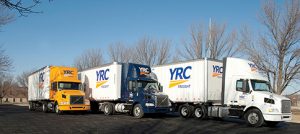
Under terms of the coronavirus relief loan, U.S. taxpayers, through the Treasury Department, will take a 30% stake in the company. YRC, based in Overland Park, Kansas, will be required to maintain its payroll at the current level of an estimated 30,000 trucking jobs, and to limit executive compensation, dividend payouts and share repurchases.
The Congressional Oversight Commission also recently reported that taxpayers appear to be at risk of losing money on the investment. YRC has had financial problems for years, well before the onset of the pandemic, and has been at risk of bankruptcy, the report said. The money is scheduled to be repaid by September 2024.
The congressional monitors said they questioned the decision to deem YRC’s business critical to national security and the process for reaching that decision. It is the first and only loan made under the national security portion of the treasury’s corporate aid program, which has made several billions of dollars in loans to major airlines and smaller air carriers. The national security section, with an available pot of up to $17 billion, had been expected earlier this year to be earmarked for hard-pressed aircraft maker Boeing or for General Electric.
To qualify for the national security aid, companies should be performing under defense contracts of the highest national priority or operating under top-secret security clearance. YRC apparently did not meet either of the criteria but qualified under a “catch-all” provision allowing a recommendation and certification from the secretary of defense or the director of national intelligence to be sufficient.
The five-member oversight commission was appointed by congressional leaders of both parties to monitor the spending of some $2 trillion in economic aid enacted by Congress this spring and directed by the Treasury Department and the Federal Reserve.
The Truckload Authority News Staff, comprised of award winning journalists and graphic artists, produces content for Truckload Authority, working in cooperation with the Truckload Carriers Association staff. Truckload Authority aims to keep TCA members abreast on the latest trends in the trucking industry as well as articles that feature TCA member executives and drivers. The Truckload Authority staff is based in Little Rock, Arkansas.








